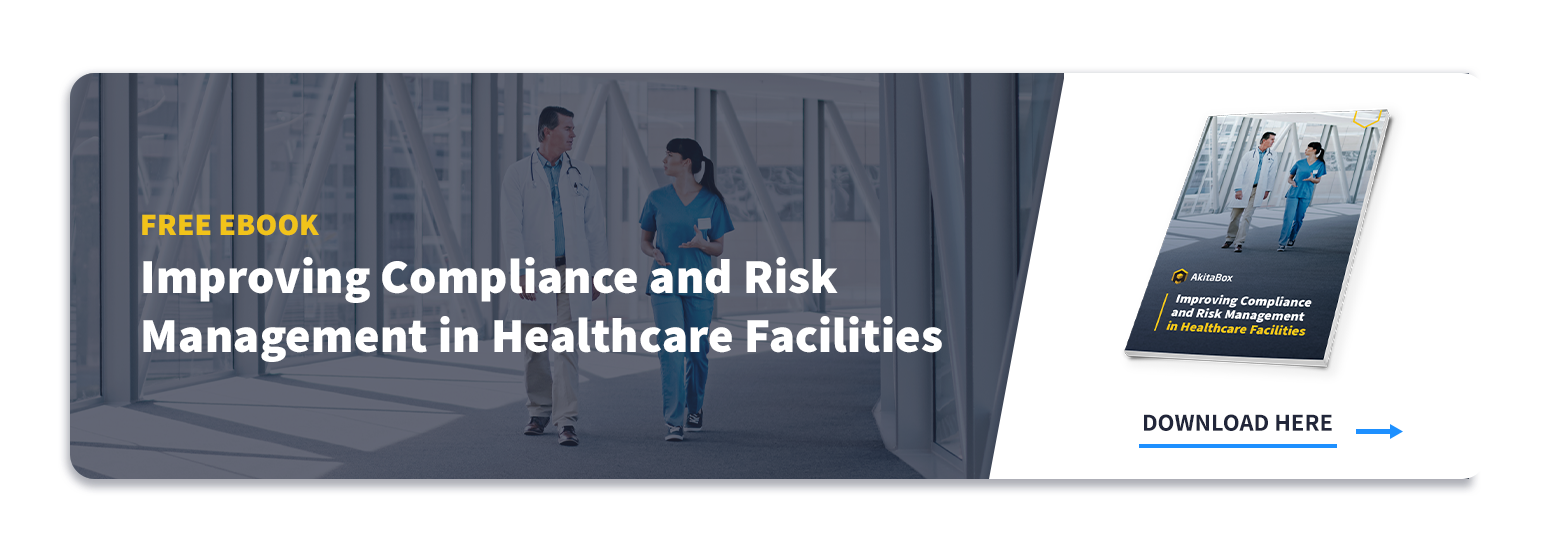5 Ways to Win the Game of Proactive Healthcare Facilities Management
Hospital facility management is a lot like chess. You need to be prepared for your opponent’s next three moves and then some. In this case, the facility is the board and your opponents are things like time, water, gravity, grime, and other factors of wear. It’s a friendly competition to start, but it could turn ugly quickly if given the chance. Facility teams must know every inch of the board, what types of moves are possible from the equipment they maintain, what needs cleaning, and what is the trade-off when making decisions.
On the facility side of the board is reactive maintenance, infectious bacterial outbreaks, power outages, and natural catastrophes. On our side, it’s the job of the facility team to protect the King (patients) at all costs by using an arsenal of knowledge, clear communication, and tools to keep everyone safe and happy.
The best chance of winning this high-stakes chess game is to take a proactive approach to any of the moves the facility might make.
5 Best Plays for Achieving Checkmate in Healthcare FM
Here are 5 proactive strategies that can help you prevent blunders and stay ahead of potential issues in facilities management. These come from the Institute of Medicine Committee on Quality of Healthcare in America
1. Avoid Relying on Memory
We all forget things. And that’s ok – we’re only human. But when patients’ lives are at stake, you need to rely on something more dependable than one person’s memory of when a piece of equipment was last inspected.
Use protocols and checklists whenever possible to ensure every maintenance or inspection step is followed and recorded. Accurate, organized record keeping is a must. Make sure everything is input into your management system – whether it’s a simple spreadsheet or a software tool. Use this mantra: If it’s not in the system, it didn’t happen.
2. Use Constraints and Forcing Functions
Constraints and forcing functions guide you to the next appropriate action or decision in a certain situation. For example, your process for inspecting fire extinguishers should give the technician no other option but to open a work order to replace the tag if it’s unreadable. The technician can’t proceed with the inspection until that work order is created, forcing that necessary action to be taken. Constraints like this help ensure errors can’t be made.
3. Simplify Key Processes
The more complex something is, the more opportunities there are for mistakes and inefficiencies. Identify your most important facility management processes and scour through them to remove roadblocks and redundancies. Your goal should be to reduce the number of handoffs required throughout the process and minimize problem areas.
Think about your work order management process. You have to write out the work order, then enter it into a computer. Someone else may have to transcribe that work order into a different database for tracking. And then another person may have to organize that same data into a special format for presenting to leadership. You can probably already see multiple areas where this process can be simplified to save time and improve accuracy.
4. Standardize Work Processes
This ties in with our first tip above. Standardization reduces the need to rely on memory. We already know that’s a good way to minimize errors. But it also allows new team members who are unfamiliar with a given process to learn it quickly and correctly. For example, creating a standardized checklist for inspecting med gas panels helps ensure everyone on the team is completing all the necessary tasks.
5. Improve Access to Accurate, Timely Information
This is often referred to as a Single Source of Truth (SSOT) model. Facilities management creates vast amounts of data. But in many cases, that data is scattered throughout multiple different systems, databases, and even three-ring binders. It’s impossible to get a true understanding of your facility’s needs when you can’t see all the data.
With a SSOT approach, all of your data is organized in one place that people can easily access and explore for the information they need.
Become a Facility Management Grandmaster
At the end of the day, the ultimate power move in the facilities management chess game is simply staying on top of what’s currently happening. To do that, you need to:
- Organize all of your data in one place
- Prove that your data is accurate and complete
- View real-time data from multiple angles
With a clearer picture of your facilities, you can more easily see potential problems before they emerge. It’s a cornerstone of being proactive.
That’s where a Facility Condition Assessment (FCA) and a healthcare facility management system come into play. A comprehensive FCA gives you an inventory of your assets and their current condition. This provides the foundation for more informed planning and budgeting. And by conducting a digital FCA using specially designed software, you can easily view the data and keep it current year over year.
Taking things a step further, integrating your FCA results into a healthcare facility management system keeps all of your building and asset data in one place. From within a centralized management system, you can handle capital planning, work order management, inspections, compliance, and more.
Explore just how much a facility management system can help you by visiting our Healthcare Facilities Management page. Plus, discover more ways to proactively manage healthcare facilities by downloading our free ebook.

